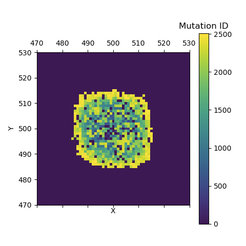Cancer Sim: Cancer cell simulation for beginners
The course of cancer is very difficult to predict. This is partly due to the fact that a tumor has an enormous genetic diversity and a high mutation rate. This enables it to adapt very quickly to its environment and to react very quickly to cancer therapy, for example. Since tumor growth cannot be observed well, computer simulations are essential to study the evolutionary development of tumors.

However, software for cancer simulation is often very complex and it is difficult to get started. "We wanted a software package that is accessible and easy to use, yet covers the essential biological processes of cancer growth, to give students and newcomers an introduction to mathematical oncology," reports Carsten Fortmann-Grote, who is responsible for "Scientific Computing" at the Max Planck Institute in Plön. The project itself is based on the work of Luka Opasic, who has developed software for his dissertation with which he hopes to improve the targeting accuracy of tumor cell samples. The researchers subsequently adapted it to quality standards of the open source community and then made it publicly available as "CancerSim" in a repository.
Open software will be further developed in the future
The program has a number of parameters that can be changed for a simulation project, such as the number of generations to be run through, the probability of mutations occurring, or the points of the tumor from which samples are taken. The system automatically checks whether the data entered are in a meaningful context, which is particularly valuable for beginners to the subject. The variables were deliberately kept limited and focus on the two-dimensional growth of tumors. On an abstract level, however, any tumor can still be simulated with it.
At the end of a simulation, a data set is exported, which contains information on the development of the cells and the frequency of mutations.
In the future, for example, it is planned to include the effects of chemotherapy in the simulation model. Beyond that, the open, i.e. freely accessible and modifiable software is to be continuously developed further.
